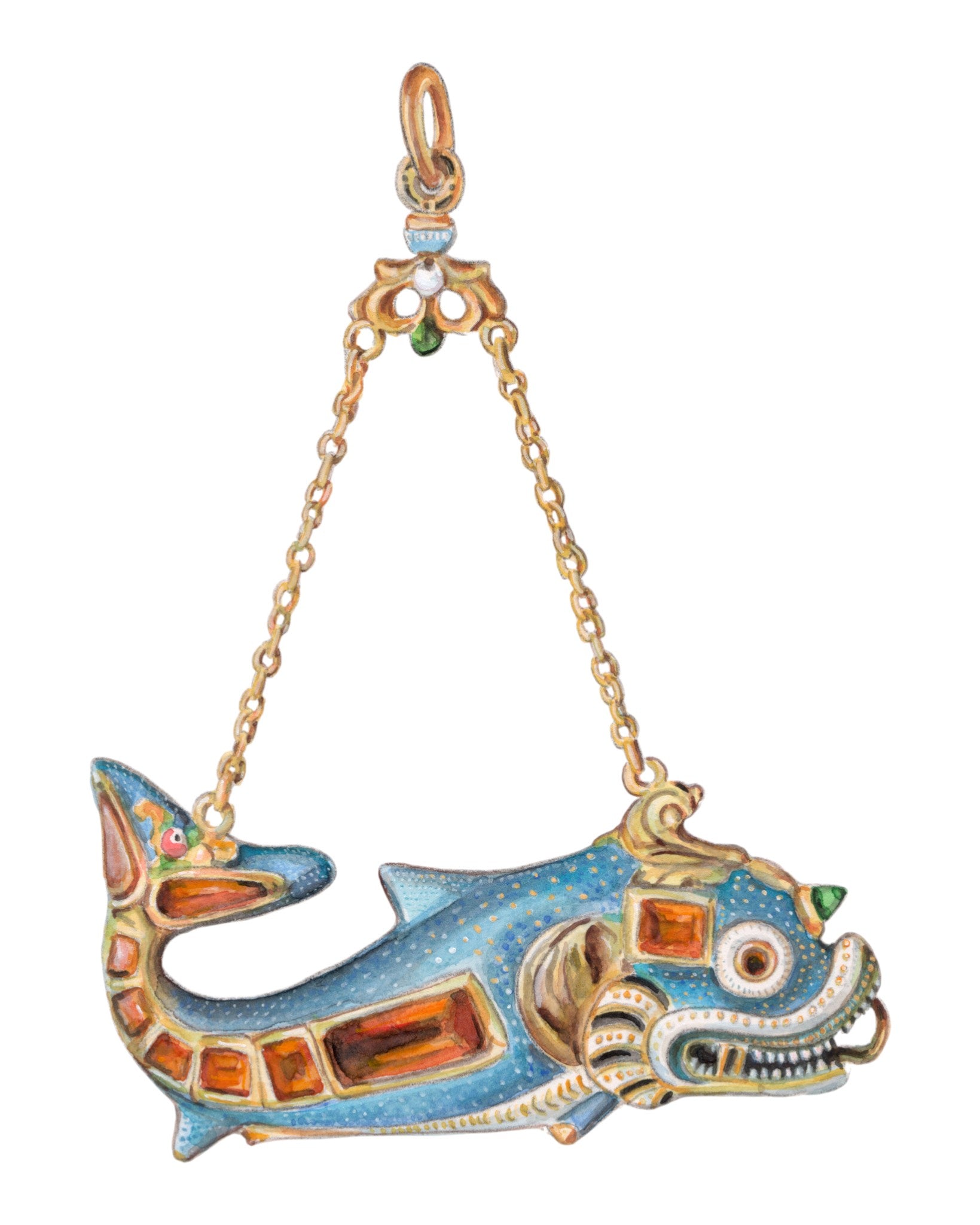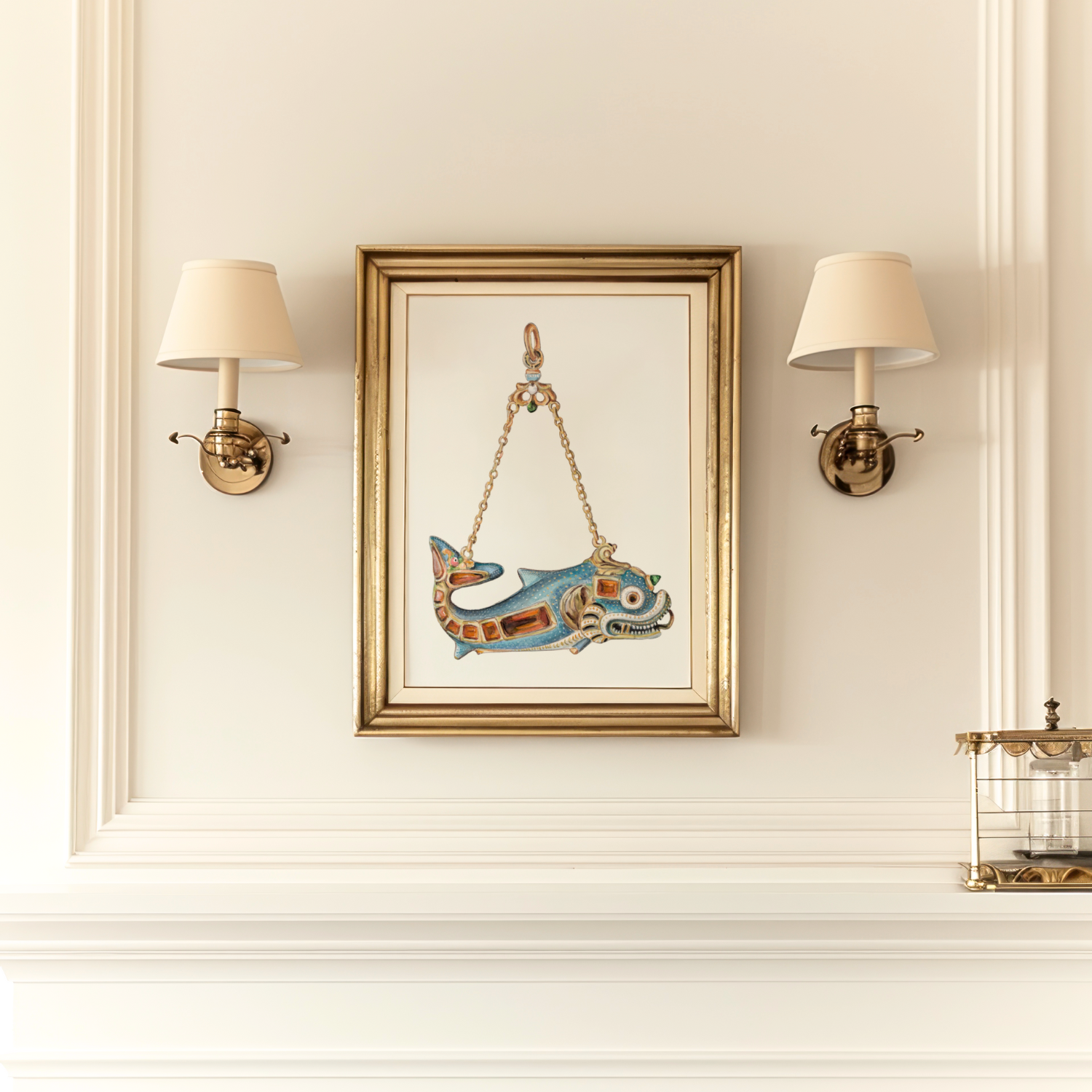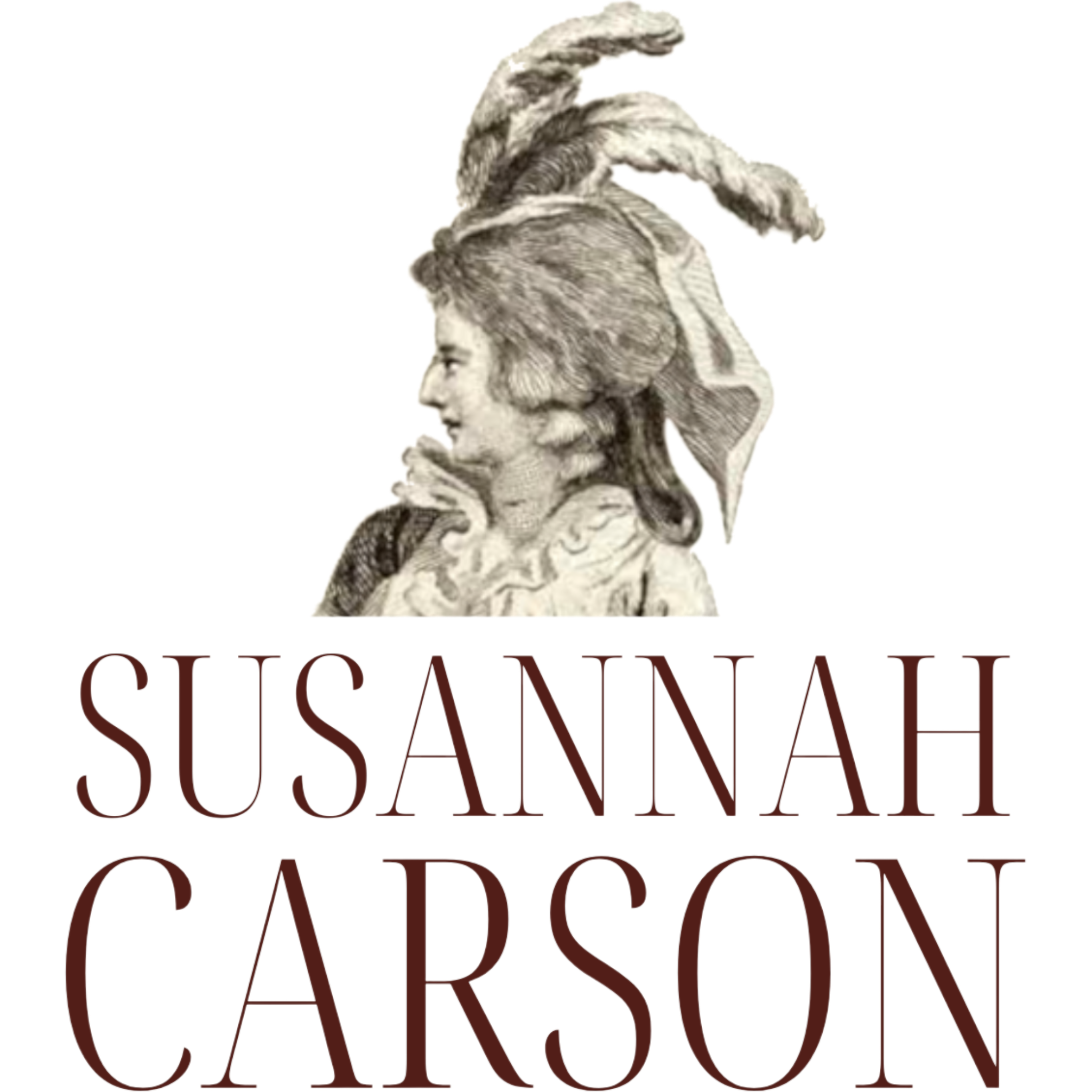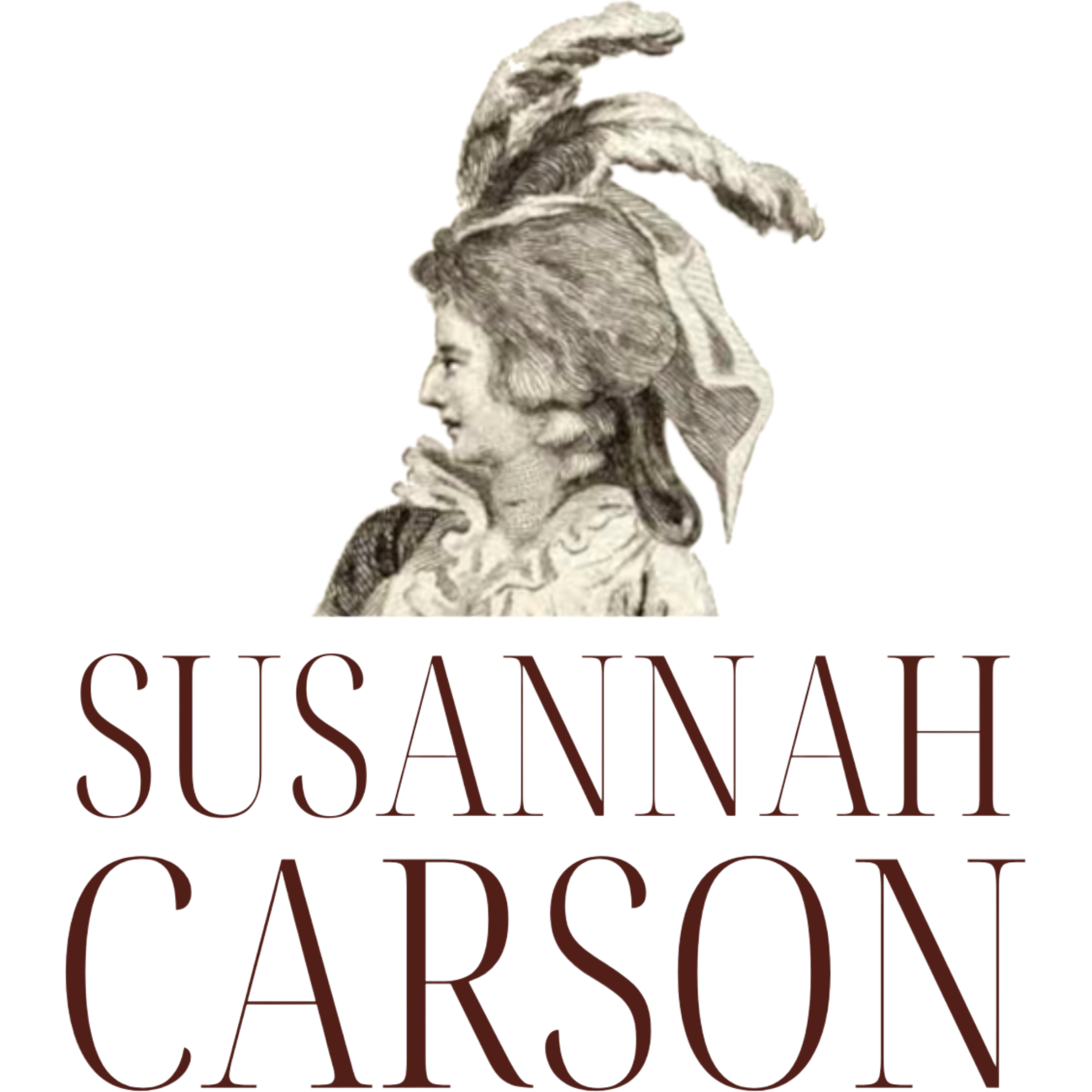THE HISTORY: Baroque pearl jewels flourished c.1550–1700, when irregular (“baroque”) pearls were prized as ready-made sculptures. Goldsmiths in Venice, Augsburg, Paris, and at the Habsburg and Medici courts set these fantastically shaped pearls in enameled gold, transforming them into mermaids and sea monsters, birds, saints, and other “habillé” figures dressed with enamel, rubies, and diamonds. Worn as pendants, bodice jewels, hat badges, and aigrettes, they broadcast maritime wealth, courtly whimsy, and the Kunstkammer love of marvels. Although they fell out of fashion in the 18th century, ateliers in the 19th-century revived the fanciful forms during the Renaissance Revival.


No. 4 Baroque Pearl Jewelry Watercolor Archival Print: Dragon Dolphin
An archival giclée print of an original watercolor painting of a Renaissance pendant in the form of a fantastical sea creature. The original pendant, Augsburg, ca. 1600, is in the Kunsthistorisches Museum, Vienna. Crafted in gold, enamel, and gemstones, it belongs to the same family of Baroque pearl pendants that transformed nature’s irregular forms into mythic beasts. The dolphin-like creature (half fish, half dragon) symbolized protection, rebirth, and good fortune. 8" × 8".
Choose options

